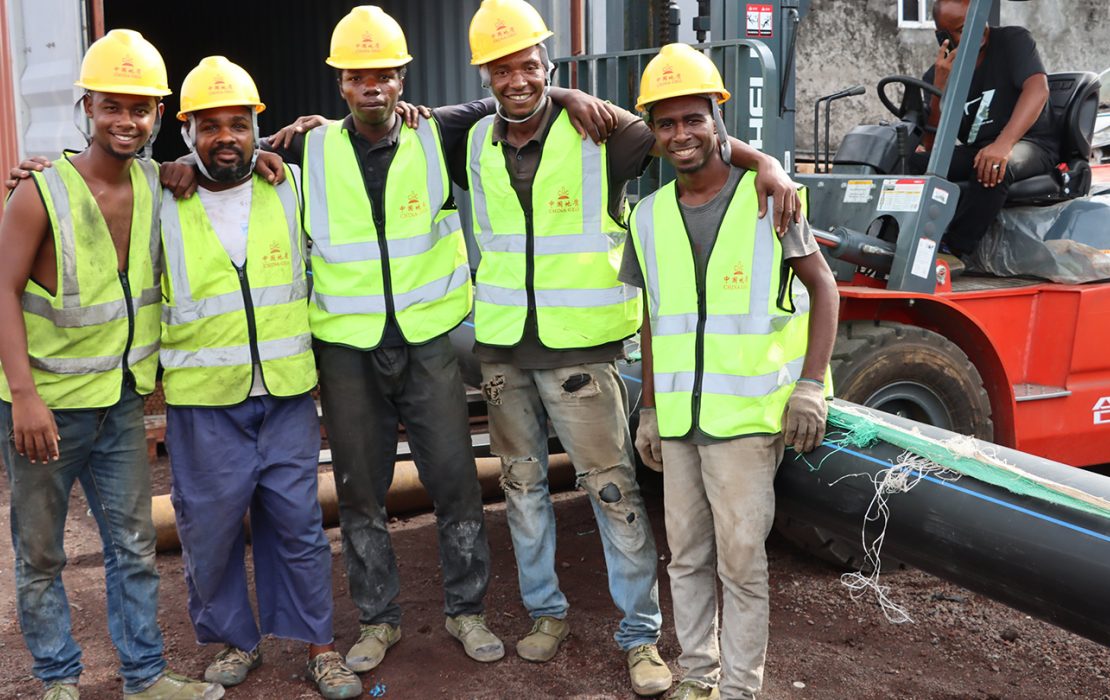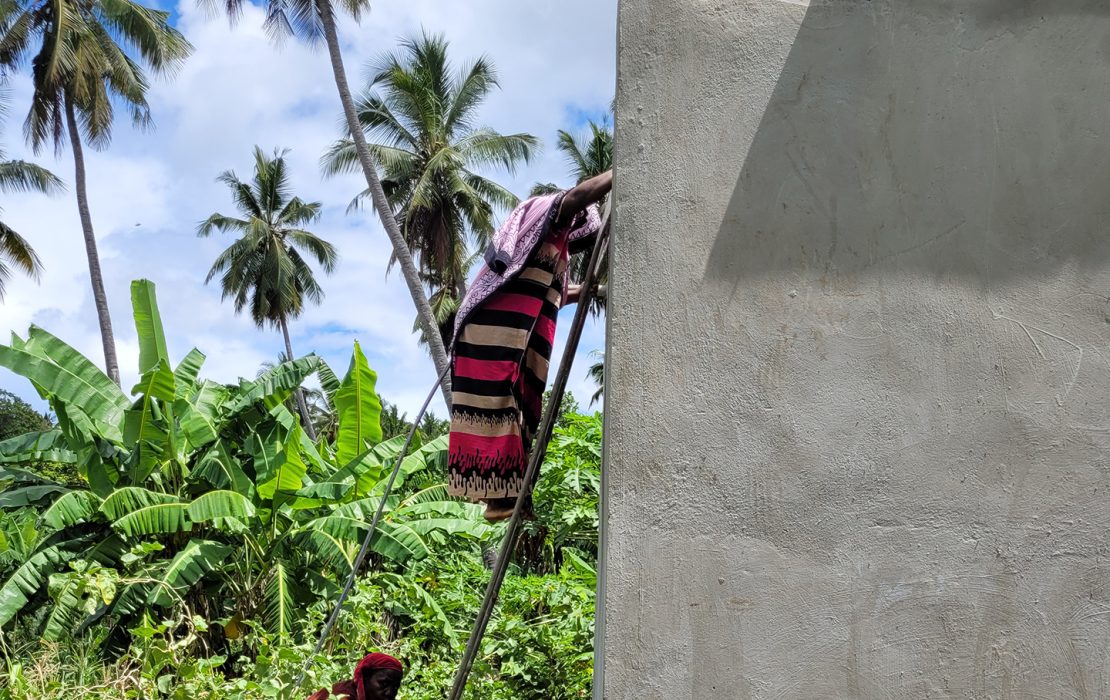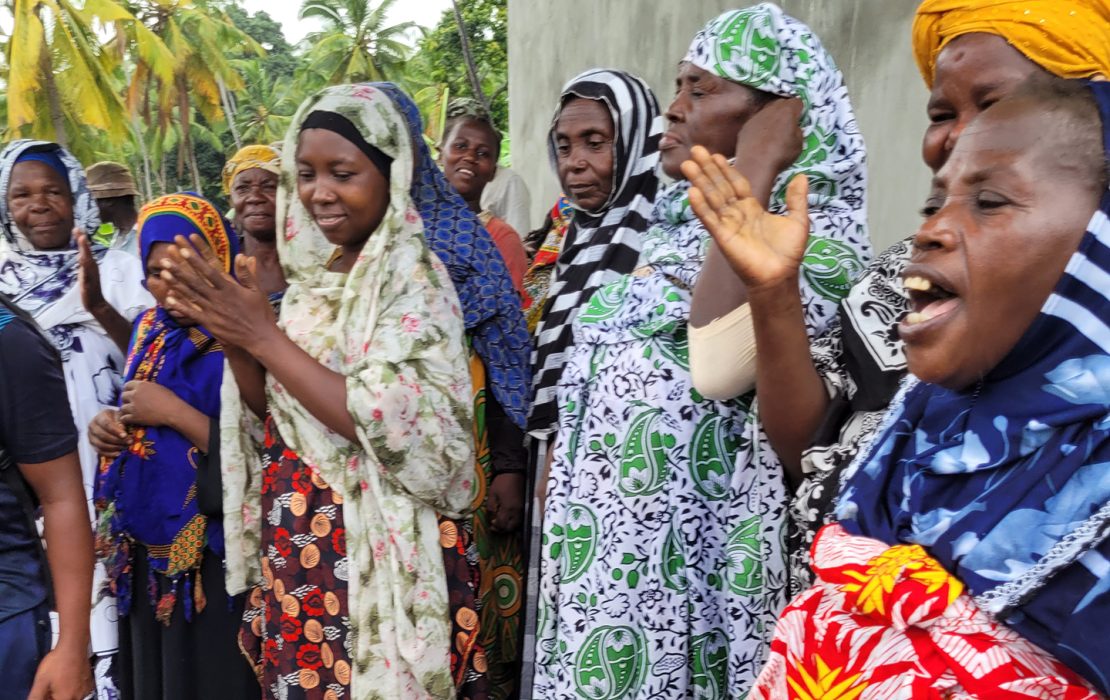
Between 70 and 80 percent of Comorians are small-scale farmers, relying on rain-fed water sources for their subsistence agriculture and livelihoods. Photo: Marine Gauthier/UNDP
Imagine waking up each day knowing that your first task is to walk for miles just to collect a few buckets of water. Imagine standing in long lines at a dry well, hoping that today, there might be enough to fill a single container. Imagine rationing that small supply for cooking, cleaning and drinking—never quite sure if it will last through the week. Imagine the frustration of watching your crops wilt and soil crack under the relentless sun, or the anxiety of sending your child to a school without clean drinking water.
This is the reality for millions of people worldwide who live without daily access to safe and reliable water. The situation is particularly dire in Africa, where 1 in 3 people face water scarcity. In Comoros, government estimates indicate only 15 percent of the population has access to a safe and reliable water source.
While a number of factors contribute to the water shortages, including the country’s natural geography and land degradation, climate change is also a major part of the problem: with shifting patterns of rainfall, many rivers on which communities once relied throughout the year now run dry most of the time.
The consequences of the crisis are severe, including for public health. So far in 2024 alone, for instance, more than 10,000 cases of cholera have been recorded – spread largely through contaminated drinking water or eating contaminated food – with 40 percent of the cases in children and adolescents. More than 149 lives have been lost in the outbreak, placing considerable pressure on an already strained health system. Of considerable concern is the fact that all hospitals do not have sufficient running water and are consequently hindered from providing patients with the required levels of hygiene.

In Comoros, government estimates indicate only 15 percent of the population has access to a safe and reliable water source. Photo: UNDP Comoros
Why is Comoros’ water supply so vulnerable to climate change?
Comoros is truly a unique context. Comprising several small islands separated by vast distances, the country’s largest island, Grande Comore, is less than 1,200 square kilometers. With its limited land area, the country is reliant on small watersheds and aquifers that have very little capacity to store water. This makes these fragile systems highly sensitive to any shifts in rainfall patterns, leaving the nation vulnerable to droughts, flash floods, erosion, and soil salinization. Reduced rainfall directly affects river flow and groundwater recharge, particularly during the dry season.
On Grande Comore, there are no permanent rivers. On the islands of Anjouan (Ndzuani) and Mwali, rivers that were once permanent are increasingly turning ephemeral, with some disappearing entirely.
Presently, water security is a critical concern across all islands and the outlook is worsening with climate change. Projections point to greater rainfall variability, prolonged droughts, and an increase in both the frequency and intensity of storm flooding. Torrential rains not only erode watersheds, further depleting surface and groundwater resources, but also damage vital water supply infrastructure, exacerbating the crisis.
Transforming water management for a more sustainable future
Recognizing the urgency, the Government of Comoros has made water access a top priority, as reflected in the country’s Nationally Determined Contribution and Comoros’ Emerging Plan (PCE 2030), with the bold ambition of providing 100 percent of the population with reliable, climate-resilient water supplies by 2030, with no one left behind. To make this happen, the government is mobilizing efforts from international partners, local government and communities alike.
In 2019, with the backing of the Green Climate Fund (GCF), Comoros launched a US$60 million 8-year project to increase reliable and safe water supply and integrate climate risk reduction into water management. Supported by UNDP and focused on 15 of the country’s most vulnerable areas, the project aims to transform water governance by strengthening the institutional, regulatory and policy frameworks for managing climate risks to water supply; integrating climate data into planning (including through enhanced monitoring and forecasting); and constructing climate-resilient infrastructure for drinking water supply and irrigation.
It is an ambitious vision, and achieving it is no small feat given the complex realities on the ground.
One of the biggest hurdles, for example, is the challenge of transporting materials to the islands. Most construction supplies need to be imported, involving complicated procurement and logistics. Often, these materials, including steel, are loaded onto ships abroad, transit through the port of Dar-es-Salaam in Tanzania, and only then are transferred to Comoros. Even sand is not readily available and has to be processed locally by grinding rocks.
Then there’s the terrain: On Grande Comore, the rocky landscape means drilling boreholes progresses at a snail’s pace—only 40 centimetres a day. It can take months just to reach the water table at depths of around 100 metres. The COVID-19 pandemic and global supply chain disruptions have only added to these challenges.

Tank construction underway, Mkazi town, Grande Comore. Photo: UNDP Comoros

Workers at project site in Mkazi town, Grande Comore. Photo: UNDP Comoros
Community-led solutions for lasting impact
Despite this context, the project is making real strides.
At the national level, the introduction of a new Water Code has marked a major shift in how water resources are governed. Integrating climate change and gender considerations, the Code sets new standards for sustainable water management and climate adaptation, while also establishing the principles of integrated water resource management to guide the sector’s future.
Locally, communities are embracing the new infrastructure – including boreholes, water treatment plants, reservoirs and distribution networks – with enthusiasm. The project is on track to provide climate-resilient water access for 450,000 people, more than half of Comoros' population. Elders have expressed gratitude for infrastructure that will benefit both current and future generations, with many pledging to ensure its upkeep and sustainability in the years to come.
In fact, strong community engagement has been a cornerstone of the project’s success, with villagers taking an active role in maintaining the new infrastructure.
In Mbatse village on Mwali island, women have organized themselves into the “Mavuna ya Baraka” (“Blessed Harvest”) association, making the upkeep of the microbasin built by the project one of their top priorities. This rainwater harvesting system has become a lifeline, helping to stabilize agricultural production during periods of unpredictable rainfall. According to the group’s leader, Mrs. Foursia Saindou, “With this reservoir, our crops no longer fail. We harvest regularly, and through our association, we are able to sell our produce and send our kids to school.”
Meanwhile in Sani village on Anjouan island, the community has a registered association with a bank account to pool resources for operating and maintaining the water supply network.
Across various project sites, similar initiatives are bringing people together to ensure the long-term success of these interventions. The project has also supported the formation of local water user associations, helping them set up effective organizational structures, training committees on how to monitor the infrastructure, document issues, and seek technical support when needed.

A member of the Mavuna Ya Baraka women's association monitors the status of their rainwater tank, Mbatse, Moheli. Photo: Mulengera Bahal’okwibale/UNDP

Communities have welcomed the new water harvesting infrastructure. Photo: Mulengera Bahal’okwibale/UNDP
If you want to go fast, go alone; if you want to go far, go together
The proverb “If you want to go fast, go alone; if you want to go far, go together,” perfectly captures Comoros’ vision for a sustainable, climate-resilient water supply into the future.
True to this philosophy, the government, with support from UNDP, is strategically leveraging multiple funding sources to address its water challenges. In addition to finance from the Green Climate Fund, Comoros has secured support from the Global Environment Facility-managed Least Developed Countries’ Fund (GEF-LDCF) which has committed funding through two key initiatives for adaptation: an initiative to further support the development of water infrastructure and another to support the development of value chains. The first is expected to start its implementation in the last quarter of 2025 and will immensely benefit from some of the water infrastructure constructed for irrigation under the GCF-funded project. Similarly, the later project will ensure that climate-smart practices are deployed to facilitate the most efficient use of water resources.
Through partnerships and pooling resources from multiple sources, Comoros is thus aiming to create a more comprehensive and effective approach to managing its water resources. Efforts are also underway to build community awareness around socially acceptable water tariffs to boost willingness to pay, ensuring sustainable, climate-resilient water supplies for all Comorians.
This coordinated effort is designed to ensure that every community, from the smallest village to the largest town, has access to safe and reliable water.
*
The project 'Ensuring Climate Resilient Water Supplies in the Comoros Islands' is funded by the Green Climate Fund and implemented by the Comoros Ministry of Agriculture, Fisheries, Environment, Territory Planning and Urban, in conjunction with national and state governments, water service providers, water user associations and communities and their development partners. Learn more.